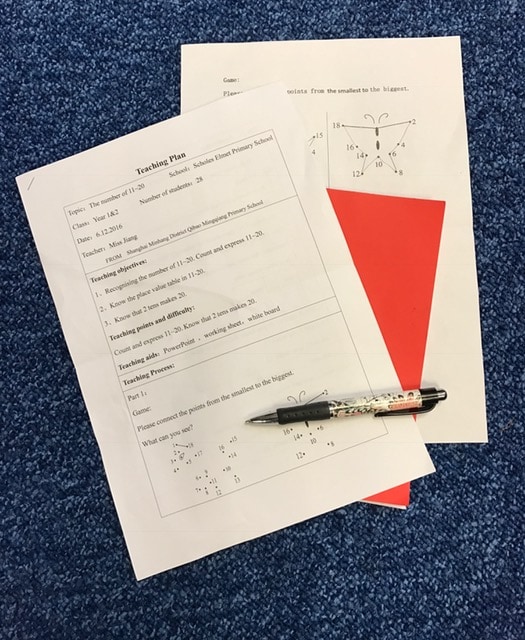What can we learn about mastery from South Asia?

Mastery is a word we are hearing a lot at the moment, and it’s often linked exclusively with mathematics teaching practices from high performing jurisdictions, like Shanghai.
I’m lucky enough to spend quite a lot of time in Primary schools - and see how teachers are teaching for mastery in England - but my experience of how mastery works in South Asia has been limited to the articles I have read and experts I have spoken to.
Late last year I was lucky enough to receive an invite to observe Miss Jiang, from the Shanghai Minhang District Qibao Mingqiang Primary School, deliver a Key Stage 1 Maths lesson at Scholes Elmet Primary School. I jumped at the opportunity as soon as it arose. The session had been organised by the White Rose Maths Hub whose lead mastery specialists have been participating in a teacher exchange programme with teachers from Shanghai.
At the start of the session, around 50 teachers were led into the school hall (we’d all been given a teaching plan, and accompanying resource sheet, which was to be used by Miss Jiang throughout the lesson). Paula Allaway (one of the Maths Hubs Mastery Specialists) kicked the session off by enthusing us about her experiences of visiting Shanghai and watching a number of maths lessons. The Year 1-2 children then entered the hall ready for their lesson. A classroom had been set-up in the centre and we were gathered around the room ready to observe.
The children were an absolute testament to their school. Incredibly well behaved, and completely unphased by the 50 odd adults looking-on.
The lesson began. The focus was the numbers 11-20 and the key teaching objectives were:
- Recognising the numbers of 11-20. Count and express 11-20.
- Know the place-value table in 11-20.
- Know that two 10s make 20.

The lesson was supported by a carefully developed PowerPoint presentation (which left no learning to chance), a work sheet and a white board. At the end of the lesson we had the opportunity to come back together as a group - to reflect and ask questions. The format was similar to that of a lesson study - a popular professional development tool most commonly associated with Japan.
So what can we learn from South Asia?
I was struck by a number of things during the session.
Small steps of learning
The lesson focused on a small learning objective, and presented concepts simply at first,making sure children understood pictorial representations before moving on to abstract ideas. This allowed children to develop a truly deep understanding of the mathematics they were learning. They saw the same idea represented in varied and diverse ways, so that children developed a deep and secure understanding of concepts and procedures. Through moving slowly, Miss Jiang was able to pick up on misconceptions and explore them with the whole class. Every teaching element was intentional, and it was clear that the misconceptions and areas of difficulty had been planned out beforehand and built into the lesson (in fact, they were listed at the top of the teaching plan).
Ping pong maths
This was a term Paula Allaway used herself and it really resonated with me. The dialogue throughout the lesson was continual. It would have been difficult to divide the lesson up into neat compartments - like a starter, whole class teaching, practice and a plenary. The conversation was constant, and this is what made the teaching so powerful. Through asking children questions, encouraging repetition and chanting Miss Jiang was able to ensure the whole class moved along together on their learning journey.
The conversation was constant, and this is what made the teaching so powerful. Through asking children questions, encouraging repetition and chanting Miss Jiang was able to ensure the whole class moved along together on their learning journey.
Use of mathematical sentences
Miss Jiang insisted children spoke in mathematical sentences throughout the session. Just giving a numerical answer wasn’t good enough. How many ones in 12? There are 12 ones in 12! At the start of the lesson I found this difficult to follow, but as the lesson progressed it became a really powerful tool. Children chanted answers together, and introducing the mathematical sentence encouraged all children in the class to engage in mathematical discussion - with each other and with their teacher.
The session was eye-opening and left me feeling excited about the future of mathematics education in England. I think we can learn a lot from high performing jurisdictions - like Shanghai - but I also think we can learn a huge amount from the thousands of inspirational teachers currently practicing and teaching mathematics creatively in England. The current focus on primary mathematics provides us with a unique opportunity to create our own version of mastery which works in our own unique culture - so that we really make a difference and ensure all children master mathematics.
The Maths Hubs are organising a number of events like these. To find out more about your local hub, visit their The Maths Hubs website.